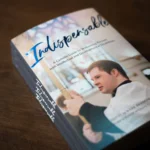Dr. Paul Casey wrote a piece arguing that very few medicines had medical testing on fetal cell lines, specifically HEK-293. The main issue with his argument is that he uses non-standard definitions of terms like medical testing and lying, and then insists they are the only ones. Instead of being the only ones, his definitions are non-standard.
His whole argument depends on his claim that something happens at the moment of initial FDA approval and nothing after that is “medical testing.” According to his theory, even one test beforehand makes a medicine completely immoral to use but dozens of tests afterward (or in fundamental research beforehand) don’t affect the morality (or barely affect). He said he checked a dozen medicines for people and “[He] found that none of their medications were tested on HEK-293.” He does not mention which medicines.
Before getting to that central point, however, two additional points need to be addressed. First, the fact that even if 100% right, his article proves far less than he claims. Second, his definition of lying. If you are not interested in this, scroll down to the header “Medical Testing.”
Missing the Point
Dr. Casey misses the point. Even if he was correct on every point – which much of this piece will show not to be the case – his entire argument does not affect the overarching argument I have made for the past year. My overarching point is a reductio ad absurdum of the ridiculous conclusions you reach if you argue all cooperation that remote is immoral. Even assuming everything he says is true, it only takes away a fraction of a percent of the ridiculousness of the argument of those claiming the connection to abortion as a reason for not vaccinating. Even assuming, he’s right, his argument is still ~99.5% as ridiculous. I covered this more in-depth in this recent piece. His claim that this article “refutes ALL of [my] articles on this topic” is radically incorrect. Even if he was 100% correct, all he’s done is show his argument reaches slightly less absurd, but still absurd, conclusions. The tweet I quote here contributed hundreds or thousands of times to abortion as getting a covid vaccine.
Lies

Casey relies on secondary definitions of Merriam-Webster and similar for a definition of “lie.” This is contrary to the Catechism and is even tenuous as a dictionary definition.
The first definition of “lie” in Merriam-Webster is in the sense of “lie down” but let’s look at the first definition of each the verb and the noun related to truth. Verb: “Lie: to make an untrue statement with intent to deceive.” Noun: “Lie: an assertion of something known or believed by the speaker or writer to be untrue with intent to deceive.” Instead of using the first, more common definition, Casey decides to use a less common definition: “an untrue or inaccurate statement that may or may not be believed true by the speaker or writer.”
Then let’s look at the Catechism. “A lie consists in speaking a falsehood with the intention of deceiving.” (2842) “To lie is to speak or act against the truth in order to lead someone into error.” (2483) This summarizes what we can learn from people like Aquinas, Liguori, etc.
In Catholic theology, we generally understand that a lie has three parts and there is debate about a fourth part. First, the statement must be untrue. Second, the speaker must know the statement is untrue. (For example, if I visit my sister and ask where her husband says and she says “in the garage” as that’s where she last saw him, she is not lying even if he is no longer in the garage as she was unaware he moved.) Third, the speaker must do so with the intention of deception. (Thus, acting, writing fiction, telling a joke, etc. where everyone knows it is not true is not a lie.) Finally, there is a debate about whether it is only a lie if spoken to one with the right to the truth. (Like if I’m hiding Jews and Nazis ask me if I am, can I directly state “no” or need I use circumlocutious statements that although true in a certain sense will likely deceive. As it is not really in play here, I will ignore this debate.)
To argue I lied, Casey must prove 1-3. He attempts but fails to prove 1, but never really addresses 2 and 3 head-on. To argue I lied (using the definition in Catholic theology which he claims expertise in by citing his degree in his Twitter bio), he would need to show that I knew the statements to be false and said it with the intention to deceive. Obviously, given they are true, I do not know them to be false. Further, even if he were right, at best he proved I made untrue statements, not lies. Even if he’s 100% right everywhere else (he isn’t), given many others with expertise in relevant fields hold such positions, it would be reasonable for a person to believe the statements I said to be true.
Using a secondary dictionary definition against an established theological definition from many good theologians and the ordinary magisterium, and against even the primary dictionary definition seems rather contrary to Casey’s claim that he bases himself on “Traditional Catholic teaching.” Traditional teaching would accept ordinary magisterium and theologians who are also doctors of the Church.
The same section of the catechism has something that Casey may want to read as his article seems to fail in this regard. “Respect for the reputation of persons forbids every attitude and word likely to cause them unjust injury. He becomes guilty: – of rash judgment who, even tacitly, assumes as true, without sufficient foundation, the moral fault of a neighbor; […] – of calumny who, by remarks contrary to the truth, harms the reputation of others and gives occasion for false judgments concerning them.” (2477) To intentionally use a non-theological and secondary dictionary definition to claim someone else (me) is breaking a commandment definitely seems at least a rash judgment. If done deceptively, it could easily be calumny.
Later Casey stretches the idea of a lie to a point that no reasonable person should count as a lie. He claims that if I write for the sake of convincing others to prudently choose vaccination, I am somehow lying if someone else uses my writing in another way. That is a completely unreasonable standard. Plenty of writings are used in ways their authors did not write them for. His claim is further contrary to the evidence in the case he notes. He claims that somehow my writing is responsible for a military member having their religious vaccine exemption rejected. But, the US military had a 100.00% rejection rate on religious exemptions to COVID vaccines (0/12,000 petitions had been accepted when I first wrote this). This seems logical as the fetal cell connection is insufficient for a Catholic religious exemption, and no other religions besides faith-healing and strict providentialist ones that reject all vaccines (thus likely struggle to pass basic training in the military) have religious grounds for rejecting a COVID-19 vaccine. (Non-healthcare, non-medical situations would be good offering a broader conscience exemption, as I’ve noted before. Also, since I wrote the first draft, the Marines approved two religious exemptions out of several thousand, but the lack of information leads me to suspect they were for those in more faith-healing and strict providentialist religions, which as noted above have a stronger case for religious exemptions than Catholics.) With such a background, the letter he cites seems more like the boss using my article trying to convince the service member to vaccinate. This would be persuasion and in accord with my intent.
If any writing is responsible for people like this losing their jobs, it would be more those that are trying to convince them not to vaccinate against, prudence, virtue, charity, the ordinary magisterium, solid medical advice, etc. Not those who suggest they follow prudence, virtue, charity, the ordinary magisterium, solid medical advice, etc.
Casey claims I lied but fails to show this on multiple levels.
Casey’s Own Situation
Comparing the reality of Casey’s life to statements he’s made online, it seems he either has a very odd situation or he made some untrue statements online.
I found his clinic but I will not post a link out of respect for his privacy. I don’t want to dox him more than he already has. In early August 2021, the top two hospitals Casey’s clinic lists as the ones it’s affiliated with announced that by late September, they would have a vaccine mandate. In that announcement, they noted that fewer than 2% of staff were unvaccinated on the day of the announcement that there would be a mandate starting ~50 days later. As well, even in early June, 96% of US physicians reported having been vaccianted. Yet in late September, Casey said: “BY FAR the majority of MDs I know disagree with you [meaning agree that we should vaccinate].” (In this thread he specified most doctors he knew were not vaccinated, despite it being only 6 days until those hospitals mandates came into force, but I cannot find that exact line now.) How can the majority of doctors he knows object to vaccines yet over 98% of the staff at the first two hospitals his clinic says they work with were vaccinated before any mandate and over a month earlier and 96% of physicians even earlier? This would be a very odd situation or some factual inaccuracy in the statement.
[EDIT February 2022: Dr. Casey is no longer listed on the website of this clinic that lists affiliated hospitals, but he was listed in December 2021 when I wrote this piece, and is still on internet archive versions of the doctor’s page. I can only assume he worked for them in December but no longer does. The same two hospitals are still listed first. I had found another clinic he was listed on, with one location on the same floor of the same building as the first one (assuming unit numbering with the first digit or two indicating the floor). He is still listed on this other one, but it did not have anything of note beyond including a PDF CV to confirm other details and ensure I had the right person.]
As well, I would wonder about how concerned he is about avoiding remote cooperation when he’s tweeting from an iPhone, posting his article to a site managed by a company that specifically caters to objectively evil content (WHOIS Lookup of LifeSiteNews), partnering with a medical care group that promotes birth control elsewhere in the company (no link to avoid doxing), etc. All of these are ethical for a person to do but would seem unethical if you follow the rigorism he proposes. Every single one is significantly less-remote cooperation than most COVID vaccines.
He claims that he follows Ripperger to distinguish vaccines from these other evils he is connected to. Ripperger is not a reliable source on vaccines for several reasons. First, he can’t identify the object of the act of vaccination. Second, he seems to misunderstand the science of cell lines and vaccines. Third, Ripperger’s main argument is very weak (I pointed out issues with it & have gotten no response – I’ve spoken to several moral theology or Catholic philosophy experts and they all find this argument weak). Fourth, even if true, Ripperger’s argument would only seem to apply to vaccines grown on fetal cell lines, not those tested, as that is a whole other step of remoteness.
“Medical Testing”
Casey’s argument stands or falls based on his definition of testing. If his definition fails, then most of his subsequent arguments fail. His definition has to be the only acceptable definition by moral and medical standards, or at very least the clearly primary one. If others work equally as well or better than his, then his argument fails. He relies on his narrow definition being the only one (or at very least clearly primary one). If one could use his definition or some other, he might not consider it testing himself but would need to admit that many others would or even that most would. If his definition is not even one of the primary definitions, then his claims fail more completely. There are 3 relevant sub-points about medical testing: first moral vs medical, second the circular nature of Casey’s assertions, and alternate definitions.
Moral vs Medical Definitions
When I wrote the piece almost a year ago, I used testing in a broad sense along the line of any research done on a substance used to determine its effectiveness or dangers in medical treatment. The point was not to use any specific medical dictionary or FDA definition but to look at testing from a moral perspective. The Farlex Partner Medical Dictionary gives a definition of “testing” along these lines: “Controlled analysis to determine specific findings.” For a moral theology analysis, or terms need not match FDA or medical dictionary terms. In fact, the term “medical testing” is often used for the blood test I get with my annual physical than for research-type testing as indicated here.
Such a broad definition seemed most appropriate given Bishop Schneider’s statement: “The crime of abortion is so monstrous that any kind of concatenation with this crime, even a very remote one, is immoral and cannot be accepted under any circumstances by a Catholic once he has become fully aware of it.” (This statement results in ridiculous conclusions if followed: I had pointed out other ridiculous conclusions and this piece intended to point out more.)
What matters from a moral perspective is the relationship between the test and the use of the medicine. Obviously, this can vary as a test for a use unrelated to the condition you are taking it for or drug interactions with drugs you don’t use is less connected than more direct testing. If the question is any kind of concatenation whatsoever, I’m not sure this difference excuses one though. (I noted this back in June in more detail than I’ll go into here.) In some cases, the difference is so slight that morally it is splitting of hairs to distinguish them.
To demonstrate let’s do a thought experiment. Imagine in 2040, moose flu arises in Canada and several medicines arise to prevent or treat it:
- Scientist A decides to run a bunch of common medicines on HEK293 with moose flu to see what their reaction is. Drug A that is commonly used to treat allergies and nobody would have otherwise suspected as a moose flu treatment, but it seems to have some effect.
- Some doctors notice that patients on Drug B commonly used for high blood pressure seem to have milder moose flu symptoms. They mention this to scientist B who runs some tests on HEK293 in the process of getting a large clinical trial to test drug B for moose flu.
- Drug C is developed by company C specifically for moose flu based on its genetics, and before they do clinical trials, they run a test of drug C on HEK293 for safety and/or to confirm how they already think it works.
- Scientist D notes a characteristic of moose flu’s protein coating shell and remembers a study done on HEK293 years ago about drug D noting that it interacts strongly with a very similar set of proteins. Based on this, scientist D proposed they go ahead with tests of Drug D’s effectiveness on moose flu. Drug D is a rare drug used for some rare hormonal issues that, like drug A, would have been unlikely to be considered as a moose flu treatment without that test.
Now all of those medicines’ use on moose flu depend about equally on their tests on HEK293. One could try to make razor-thin distinctions, but they would at most make it ever so slightly different but still in the same general range. If anything, drugs A and D seem most dependent on HEK293 as the mechanism to use them on moose flu was found using HEK293 while for B and C it was safety or other secondary testing to get approval for human trials, not the actual mechanism.
Casey, however, wants to say drug C is absolute verboten due to its connection but using drugs A, B & D for moose flu is not something we should give serious moral consideration to. He claims the tests of A, B & D don’t count. He says they aren’t even medical testing. When moral theology is more concerned with causal connections, such a judgment seems odd as the causal connections seem almost identical and, if anything, more serious with A and D, than B and C.
This matters as many rejecting vaccines over fetal cell line testing (C above) are then suggesting drugs that are similar to A, B, C or D. (Hydroxychloroquine, ivermectin, monoclonal antibodies, and every widely promoted therapeutic for covid I’ve looked at fit into category A, B, C or D.)
Note: Being Canadian, I wanted a name that pokes fun at ourselves, not others, out of charity. I originally wrote beaver flu, but then I remembered that beaver fever is a real medical condition while the biggest reference to “moose flu” online is in jest about the time of swine flu in 2010.
Casey’s Circular Argument
Casey’s whole point is that the only medical testing that counts is the medical testing for initial FDA approval. Any fetal testing in this stage makes a drug morally unusable, but anywhere else it is of little to no moral concern. According to him, anything in fundamental research that application relies on, any other tests where a scientist draws the idea to use this drug on this condition, or further testing for drug interactions or for additional uses of a drug is not just of slightly lesser importance to him, but of basically no importance.
However, his sourcing is tautological. He references the FDA site multiple times for this, but all his references are to pages on the steps of drug development and approval. Of course, the page on the testing that needs to be done for initial approval of a drug will say that the testing that needs to be done for the initial approval of the drug is done with the drug is approved. In other words, he’s taking the page on what testing should be done before a drug is approved to attempt to prove that the only testing is that which is done before a drug is approved. This is circular and illogical.
This may have some basis, were other medical sources and other parts of the FDA site to concur or follow similar lines, but, as we will see below, they do not.
Other Sources “Defining Medical Testing”
Casey claims his definition is the only definition of medical testing. If that is the case, we should see it used across medical reference sources. Let’s look at a series of medical sources on this to see what they say:
- Merriam-Webster’s medical dictionary on “Test” (1st definition): “A critical examination, observation, evaluation, or trial. Specifically: the procedure of submitting a statement to such conditions or operations as will lead to its proof or disproof or to its acceptance or rejection.” That seems more consistent with my use than Casey’s
- Merriam-Webster’s medical dictionary on “Trial” (1st definition): “a tryout or experiment to test quality, value, or usefulness.” That also seems to lack any reference to timing regarding FDA approval.
- Dorland’s Illustrated Medical Dictionary gives similar definitions (33rd/2020 edition):
- Test: “1. an examination or trial. 2. a significant chemical reaction.”
- Trial: “a test, study, or experiment.”
- Neither relates in any way to timing. The trial section does list stages I-IV as categories of trials. if Casey wants to argue only stages I-III of initial approval count, he can but he need to defend that view as that is not the simple definiton of “medical testing.”
- The Farlex Partner Medical Dictionary cited above is similar.
- The FDA gives plenty of other definitions of terms related to testing on this page (too many to cite all) and leaves open that these things can happen after initial approval.
- Contrary to Casey’s claim, the FDA often requires non-human tests when looking to get a drug approved for additional uses. This is usually done via what’s called an IND (Investigational New Drug Application).
- Casey said getting an IND meant “it does not have to be taken back to the laboratory.”
- On the contrary, in many cases federal (FDA) regulations explicitly require that lab tests be done (AKA “nonclinical laboratory studies”) for an IND, which may or may not involve fetal cell lines. For example, if the dose is higher or delivery is different, before clinical trials (i.e. testing on humans), you need to test the safety of this higher dose in the lab on animals or cell lines. Also, in many other cases, nonclinical laboratory studies would be helpful in moving forward approval, so likely often done even if not strictly speaking required. The exact words from government code: “Adequate information about pharmacological and toxicological studies of the drug involving laboratory animals or in vitro, on the basis of which the sponsor has concluded that it is reasonably safe to conduct the proposed clinical investigations.” (In vitro would often be on cell lines of some form.)
- A doctor friend pointed out to me that many of the studies that Casey would dismiss actually refer to what they do as “testing.” As they are published in peer-reviewed medical journals, that clearly indicates that Casey’s definition is not the only one used in medicine. (Peer-reviewed journals would ask the authors to use another term if this was an inappropriate term.) I will summarize what the study tested, then quote from it that it refers to its action as testing. (Emphasis added here.)
- How does Tylenol reduce fever? “Acetaminophen is one of the most commonly used analgesics worldwide, and it is generally assumed that it induces analgesia and antipyresia mainly by inhibiting cyclooxygenase. However, the exact mode of action is still not fully understood and this also applies to adverse effects of acetaminophen such as hepatotoxicity. […] In the present study we tested this hypothesis by performing in vitro electrophysiology and calcium imaging on recombinant as well as native human or rodent TRPV1 channels.”
- Aspirin adds an acetyl group to a large cell protein called p300, which helps reduce inflammation. “Previously, we showed that full activation of NF-κB activity requires the reversible acetylation of NF-κB by CBP/p300 histone acetyltransferases (HATs). Here, we have tested the possibility that salicylic acid might exert its transcriptional inhibitory activity by directly affecting NF-κB acetylation via inhibition of CBP/p300 acetyltransferase activity…” “To further test the hypothesis that p300 is a relevant target of salicylate in vivo, we overexpressed exogenous p300 at different levels and determined whether it suppresses the effect of salicylate on histone H2B acetylation.”
In summary, most medical references disagree with Casey’s definition of testing. In fact, beyond the tautological source Casey used for a definition, no others I saw concurred with his definition. (There may be some but given the evidence presented, it is clear his definition is not the primary one.) Furthermore, he was factually inaccurate on two more points. He claims that such tests are never required for additional uses of a drug when the FDA site specifically says they often are. Finally, the studies he claims did not do testing on HEK293, specifically say they are testing on HEK-293 in peer-reviewed medical journals meaning that is an accepted use of “testing.”
Conclusion
Casey has some solid points if his definitions are the only acceptable definitions. However, two of his primary definitions are far from the standard definitions. They aren’t the definitions that make the most sense in this case. They seem specifically chosen to make his point, avoiding more obvious definitions that would go contrary to his point. I pointed to the main definitions with a multitude of sources. All concur in the essence of the definition and are contrary to Casey.
The editor of the first site this was posted on has called for me to retract, but looking at the evidence objectively, I see several statements by Casey that directly need retraction. He can’t argue against the fact the hospital associated with his clinic was 98% vaccinated before a mandate was announced and 96% of physicians were vaccinated even earlier, and that the FDA has said you often need lab tests for additional uses of drugs. I would think that he also has a moral obligation to retract the harsh judgment (or calumny) against me. I would appreciate it if he retracted the whole piece but that likely won’t happen. Maybe, at least he can admit he is using tangential non-standard definitions while excluding the more common, more accepted, and more proper definitions.
Note: a few minor updates were made to clarify wording. (1) Clarification on what theological expertise Casey claims. (2) Emphasizing that I used the Merriam-Webster medical dictionary for “test.” (3) Clarifying Casey’s relationship to the hospital and the percentages vaccinated.










Very interesting article, Fr. Schneider!
Unfortunately, some of the people I know have experienced doubts about taking common OTC medicines, particularly Tums, after reading your earlier article on Patheos. I have tried to reason that it is fully licit for a Catholic to take Tums as there is no evidence whatsoever that Tums was ever tested on HEK293. In fact, I could find no information to corroborate your earlier claim about Tums. The links you provided relate to the testing of calcium carbonate and have no relation to Tums (which, as a trademarked product formula includes calc.carb., corn starch, sugar and some fillers). Nor could I find any evidence in your earlier publications that GlaxoSmithKline, the manufacturer of Tums had ever run such tests on this drug.
To learn more about this, I reached out to the corporate office of GSK in Warren, New Jersey. The answer I received was very succint: “GSK Consumer Healthcare does not use fetal cell lines in the development or manufacturing of our products.” I guess this answer includes other GSK Consumer Healthcare (non-vaccine) products like Sensodyne toothpaste, etc.
So, in short, I would very much appreciate it if you could post direct evidence that GSK or someone else tested the Tums(R) licensed product on HEK293 in their labs. I hope that I am able to convince those folks to start taking Tums again, but it is possible that I am wrong and that Tums were indeed tested on these fetal stem cell lines.
P.S. I am not questioning your evidence about hydroxychlorine or ivermectin and so on, but I need clarification on Tums.
The question is ANY connection whatsoever as +Schneider brought up. It is +Schneider who made up this modern theory that I decided to take to its logical conclusion: I hope showing the absurd logical conclusions of his theory makes others reconsider the theory as +Schneider’s theory is unsustainable whle living in a modern world. This is a reductio ad absurdum: https://frmatthewlc.com/2022/01/catholic-anti-vax-arguments-reductio-ad-absurdum-2-2/
There is definitely less of a connection if the testing was for a use unrelated to your use and after approval. Like calcium carbonate is used as an antacid (i.e. Tums) vs. testing for some other use. I admitted such over 6 months ago in response to Jose Trasancos of COG for Life (https://www.patheos.com/blogs/throughcatholiclenses/2021/06/anti-vaccine-catholics-break-moral-theology-principles/), although more with painkilers than Tums. That does not fully answer the question though. Degrees of cooperation allowed are proportional to the benefit. THe benefit from Tums is generally much less than the benefit of a COVID vaccine, so for a COVID vaccine much more cooperation is morally acceptable before you are unable to do the act.
Moreover, if you follow the logic of the argument form +Schnedier et al, they would be unable to read +Schneider’s statement without breaking the rules of +Schneider’s statement. (Technically, someone who likes in Khazakstan and got a handwritten version might be OK, but the online version that is common can’t be read without cooperating in abortion MORE than with a vaccine.
The last section in this one on scruples might help answer these people’s concerns. https://frmatthewlc.com/2022/01/catholic-anti-vax-arguments-reductio-ad-absurdum-2-2/
My point is to show how infinitesimally small the cooperation is regarding a COVID vaccine tested on fetal cell lines. I use comparisons to ways we cooperate in other ways not to say “we already sin” but as the degree of remoteness is so remote it is hard to otherwise comprehend. Fior example, I’m doing the weekly grocery shopping for my community today and I’m almost certain I will cooperate in abortion many times what I did regarding fetal cell line testing when vaccinating: this does not mean grocery shopping is bad, but as it is a good act where the very minor remote cooperation does not corrupt a fortiori (all the more) getting a COVID vaccine is good act which the astronomically emote cooperation does not corrupt. In fact the taxes paid by the people and companies involved in the vaccination are more cooperation than the fetal cell line testing.
I have heard of Bishop Schneider but I am not very familiar with his writings.
Now, with regards to my original question. Judging from your response and your link to responding to Trascanos, if I understand it correctly, there is no evidence that Tums as a fully-formulated GSK product (containing corn starch, sugar, calcium carbonate, etc,) was ever designed, developed or tested on HEK293 by GlaxoSmithKline. However, a component of Tums, calcium carbonate (a ubiquitous natural substance, for example in seashells) was indeed tested on HEK in some lab in China but that (1) the testing of calcium carbonate was completely “unrelated” to the use/purpose of calc.carb. as antacid; that (2) testing of calcium carbonate was not carried out at the behest of GSK Corporation, the manufacturers of Tums, and that (3) there is no evidence whatseover to trace the chunks of calcium carbonate tested in that lab in China to the calcium carbonate used by GSK Tums-manufacturing plant in St. Louis to be inserted inside the Tums product.
In other words, would you say that the origins, development and manufacturing of Tums have no DIRECT and tangible link to HEK293 testing? Would you say that no believer should feel burdened by conscience in taking Tums, because whatever connection to HEK293 that may be concocted by whatever logic (such as bishop Schneider’s), that connection is so indirect and so remote that it is practically untraceable?
No believer should be burdened in conscience w/ regard to Tums or COVID vaccines. But the logic of +Schneider’s statement would burden people so much we could not operate in modern society. +Schneider’s statement is the primary statement on which those rejecting vaccines due to fetal testing rely on. Following traditional Catholic teaching on remote cooperation – not the +Schneider or Ripperger rigorist theologies which do not follow traditional teaching or theology – would properly conclude that this connection is so remote as to be close to morally irrelevant. I explained how astronomically remote it was here: https://www.thepublicdiscourse.com/2020/11/72866/ Church teaching has only ever said such vaccines are ethical (not even suggesting one might skip them: https://catholicmoraltheology.com/testing-on-fetal-cell-lines-what-does-the-church-teach/
Thank you for the reply, Fr. Schneider!
So, if “no believer should be burdened in conscience w/regard to Tums or COVID vaccines,” then why did USCCB release a statement against taking the Janssen vaccine when ” ethically irreproachable Covid-19 vaccines” are available? Why did the Press Office of Polish Bishops (led by Józef Wróbel) tell Catholics to avoid AstraZeneca in favor of Pfizer?
Wouldn’t the exclusion of AZ and J&J from the category of “ethically irreproachable” burden the conscience of a layperson, just by that very fact?
It seems like there is some confusing messaging to the laity. On the one hand, taking AstraZeneca is equivalent to taking Tums (as you so well explained). Then, the message is – “take whatever medicine you want, because everything is contaminated by HEK anyway.” On the other hand, taking Astra Zeneca is not equivalent to taking Tums, because AZ had direct connection to HEK293 in development and production (as US and Polish bishops claimed), whereas the manufacturers of Tums have very remote and very indirect connections at best. In this case, the message is – “choose this medicine and not that, because this product has less association/contamination with HEK than that one.” So, which one is it, should one’s conscience care about exercising a choice about which medicine to take, when such a choice exists?
Sorry, to clarify, when I said, “No believer should be burdened in conscience w/ regard to Tums or COVID vaccines.” I was referring primarily to the Moderna & Pfizer vaccines which in the USA (where I live) represent 96% of doses. With them being 96%, I take these as the default for COVID vaccines one would get. In my original piece, I noted it was about those vaccines tested on fetal cell lines, not those GROWN ON fetal cell lines.
The Church has taught that one may skip vaccines if they are GROWN ON fetal cell lines due to the remote connection to abortion (see the link to the Catholic Moral Theology blog in the last comment).
Sorry for the confusion on this point in the last comment. I should have been clearer.
Thank you for the clarification!
Yes, there is major difference between Moderna/Pfizer and adenovector vaccines like AZ and Janssen.
Now, one more issue. Would you say that Moderna’s connection to HEK testing was as strong as the connection of Tums to HEK testing? If we were to express these connections spatially, would Moderna and Tums be equidistant, or would Tums be considered to be further away from HEK testing than Moderna?
So, for example, if I were to ask these three questions to Moderna scientists, I would get a very clear reply as to – (1) When did the testing take place? (2) What was the purpose of the testing (to help the development of mRNA S-protein expression, to see how immune response works, etc.)? and (3) Who sponsored the testing?
Now, what would be the answer to these three questions in regards to Tums?
[I tried asking GSK Consumer Healthcare directly but they deny that any testing ever took place in connection to their Tums product. So, perhaps, you may have some secret information that GSK corporation is refusing to disclose, so to speak. =) ]
Which US-made products that you buy today in the USA are most connected to US slavery? The most logical answer is that the connection of all is so distant to be morally irrelevant. Yet, it would seem that some things like US cotton or US tobacco are more connected than any of these medicines to abortion. The connection of all is so remote as to be almost irrelevant for morals.